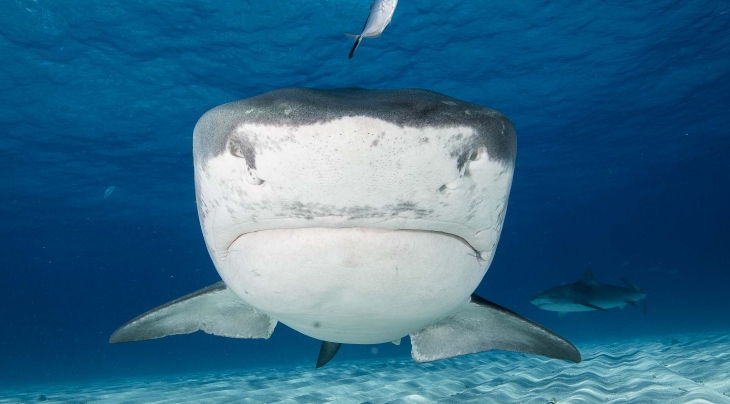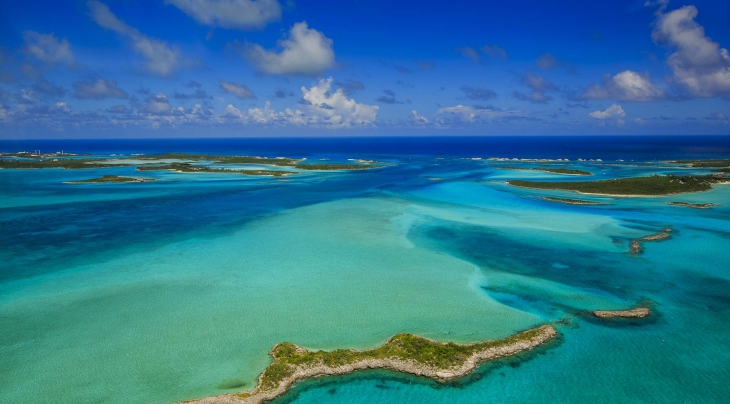- More More
- Blog
- Inspire me
- Groups
- Offers More
- Dive Courses More
- Liveaboards
More

Liveaboard Trips
On-board accommodation offering the opportunity to live right over the dive sites and to experience secluded dives...
Diving regions...
- LATEST AVAILABILITY BY REGION
- Red Sea availability
- Maldives availability
- Indonesian availability
- Socorro Mexico availability
- Galapagos availability
- ALL LIVEABOARD DIVING REGIONS
- Bahamas
- Bikini Atoll
- Caribbean
- Cocos Island
- Destinations
MoreDIVING REGIONS...
Our Top destinations....Why not try....
Tiger Beach
This itinerary is an exploration of the remote areas around the West End of Grand Bahama Island. The West End area is rarely visited by divers and is home to many creatures – both large and small.
At least one afternoon during the trip will be dedicated to a dive at the area known as 'Tiger Beach' where we will try to attract sharks using a 'scent triangle' filled with bait. Both Caribbean Reef Sharks and Tiger Sharks are known to frequent the area.


Areas visited on this liveaboard itinerary include:
West End/Tiger Beach: Tiger Beach is a 52 km2 (20 square mile) area located around 30 nautical miles off the West End of Grand Bahama Island and the best known point for tiger sharks, Caribbean reef and lemon shark encounters, in addition to the occasional appearance of great hammerheads. At a depth of around 8-10m (26-33ft), and average visibility of 25 metres (80+ ft), this white sandy bottom area is the ultimate site for photographers and videographers to get their dream close up shots. We usually meet pregnant female tiger sharks that remain in these shallow waters for several months on end.
During a trip to Tiger Beach, you will not only encounter these impressive sharks, but are likely to get to know and discern several individuals, like Emma and Princess. The theory is that female tiger sharks, after mating in the deep waters, seek the protection of the shallow sandy plateau to fulfil their pregnancy. Where these ladies give birth is yet to be discovered.
Baited / Feeding Dives: There are various mooring/ anchor points throughout the Tiger Beach area at relatively shallow depths where we will stop for these breathtaking dives. Guests will be invited to dive in groups of eight where they form a ‘V’ formation kneeling in the sand, with one of our expert shark divers at the apex of the ‘V’. The tiger sharks typically arrive soon after we enter the water, at which point the show will begin.
An average dive at Tiger Beach can bring as many as six (sometimes many more) tiger sharks into the area. The majestic tigers will swim from the outer limits of your ‘V’ formation to the apex where our feeder will be waiting with the bait box.
After feeding, the sharks will be redirected back down the middle of the ‘V’ allowing for some amazing close encounters and jaw dropping photograph opportunities. In addition to the tiger sharks, there are good chances of seeing bull sharks, black tip reef sharks, lemon sharks and, if you’re lucky, you may even see a great hammerhead!
Fish Tales: Close to Tiger Beach with similar shark sightings but a little deeper depths. There's an opportunity to see lemon sharks, Caribbean reef sharks and tiger sharks.
Lighthouse: Just beyond West End, this is another great location to see great hammerheads, tiger sharks, nurse sharks, lemon sharks, and even bull sharks have been spotted.
Sugar Wreck: Located not far from Tiger Beach, Sugar Wreck was an old sailing ship that sank whilst carrying, unsurprisingly, sugar, to the Caribbean. Abundant in fish life, the bones of the ship are now home to congregations of snappers, grunts, wrasse, gobies, angelfish and parrot fish that can be seen all over the wreck. Lying in only 6 metres (20 feet) of water, this is a dive site accessible only with our tender. In addition to the wide array of fish that can be seen at the site, sometimes you can also see reef, lemon, nurse and tiger sharks lingering.
Mount Olympus: The peak of this 450+ metre (1,475 ft) tall, coral-encrusted underwater pinnacle lies at the outer reaches of the Tiger Beach area. Although this site is best explored as a deep or even technical dive, the top of the pinnacle is relatively shallow at around 18 metres where there is still plenty to see amongst the awe-inspiring coral canyons. A range of shark species, sea turtles, manta rays and dolphins often visit the site.
Mini Wall: The affectionately named Mini Wall, or Shark Ledge as you may find it called in some guides, is exactly as it sounds. A beautiful ledge that drops from around 5 metres to 21 metres (approx. 15–70 feet). The site is covered in a mix of healthy soft and hard coral, and is patrolled by multiple Caribbean reef sharks, and large groupers. Occasionally, you can also see turtles and eagle rays here. You may even be lucky enough to spot one of the large great hammerheads that also visit the area.
Theo’s wreck: Built in Norway in 1958, the 70 metre (229ft) long cargo vessel was owned by the Bahama Cement Company and used for transporting cement during the 1970s under the name MV Island Cement. She was taken out of service in 1980 and scuttled to create an artificial reef and dive site in 1982.
Located approximately 2.5kms (1.5 miles) off the coast of Grand Bahama, the wreck rests on her port side on the sandy bottom at a depth of approximately 30 metres (100ft) between the reef and the continental shelf drop off. Due to her location, currents can be strong depending on the tides; her position is marked by buoys attached to her stern and bow, which are also used as descent and ascent lines.
During her 30 years at rest on the ocean floor, Theo's Wreck has become rich in marine life with sponges and corals covering many parts, and is easily penetrable for those with the certification and experience to do so.
Shark Junction: Shark Junction is one of the signature dive sites of Grand Bahama and is famous for its large schools of reef sharks. Located close to the reef on the south coast of the Grand Bahama, just outside of Port Lucaya, Shark Junction is also known for its large groupers. The sandy bottom, with scattered coral boulders also plays host to a variety of more elusive marine creatures, including stingrays and moray eels.
Sea Star wreck: Intentionally sunk in April 2002, the Sea Star II, formerly known as Emmanuelle, is a 55 metre (180 ft) long freighter, split into two parts, which rests upright at a depth of around 28 metres (92 ft). Cement ballast and holes that were part of the preparation for the vessel's sinking are still visible in the large cargo hold which is easily accessible for exploration from the main deck. Divers who are more experienced in wreck penetration can also explore other areas such as the kitchen, crew quarters and wheelhouse.
The wreck is home to a varied species of marine plants and fish including grunts, jacks, the occasional barracuda and schools of snapper which hang out in the small crane located on the main deck.
Caves: Located close to the edge of the reef, near the drop-off along the Port Lucaya coastline, 'The Caves' are actually an arrangement of reef formations with a lot of swim-throughs. With so many cracks and crevices providing hiding places for fish and critters it's hard to know where to look for fear of missing something. Along the reef, sharks can frequently be spotted as well as a variety of groupers and jacks.
EXPERIENCE REQUIRED: Divers must be advanced, 18 years of age over and have at least 50 dives to enjoy this itinerary.



